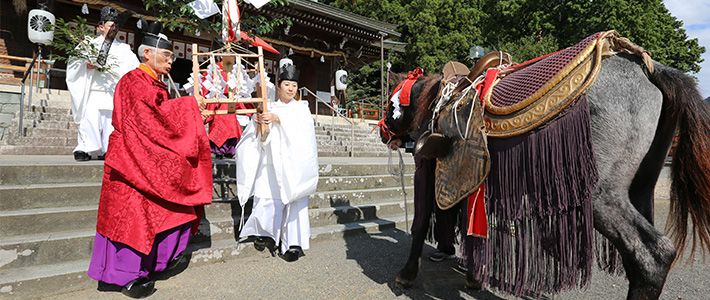
Insider’s Guide to Shintō Shrines
“Shōzoku”: The Shintō Vestments
Guideto Japan
Culture- English
- 日本語
- 简体字
- 繁體字
- Français
- Español
- العربية
- Русский
The shōzoku (traditional vestments) worn by Shintō priests are quite distinctive in their design. They reflect a court style that originated in ancient China but evolved in a uniquely Japanese direction during the Heian period (794–1185). Today, Shintō priests are the only people who wear such attire. Until recently, these vestments were exclusively male garments, since women were barred from the Shintō priesthood. The shōzoku worn by Shintō priestesses today has been adapted from the traditional male costume.
Shintō vestments fall into three classes: seisō (formal), reisō (ritual), and jōsō (ordinary). Formal seisō vestments are in the style known as ikan, consisting of a colored and sometimes patterned belted robe called a hō over hakama (loose trousers) and worn with a headdress known as a kanmuri (see illustration). These are modeled on the robes of office worn by the ancient nobility.
The color and pattern of the robe is keyed to rank. Ritual reisō vestments are in a style termed saifuku, which differs from the ikan in that the cloth is pure white with no pattern. These vestments are for use exclusively by priests in the performance of Shintō rites. At times they are also used in place of seisō vestments for the most formal rites.
Jōsō (ordinary vestments) are called either jōe, meaning “purified robes,” or kariginu. The kariginu (as the Japanese term suggests) is based on the garments ancient nobles donned when hunting, and it is designed to facilitate movement. As this is the everyday garb of a Shintō priest, it is the style of vestment most often seen by shrine visitors. Priests wearing this costume don a tall hat called an eboshi instead of the kanmuri. The color of the hakama signals rank: gūji and gon-gūji (the highest-ranking priests) wear purple, while negi, gon-negi, and other lesser priests wear light blue.
When attired in Shintō vestments, male priests always bear a baton called a shaku in their right hand and wear low wooden clogs known as asagutsu.
Miko, or “shrine maidens,” typically wear red hakama trousers. Miko are not ordained priestesses but young unmarried women trained to assist with a variety of tasks.
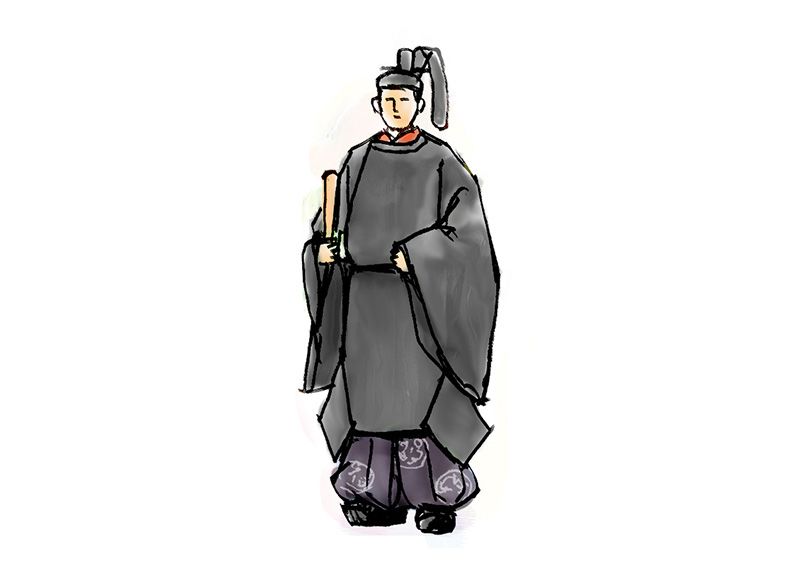 Formal vestments for priests of highest rank (ikan) with kanmuri
Formal vestments for priests of highest rank (ikan) with kanmuri
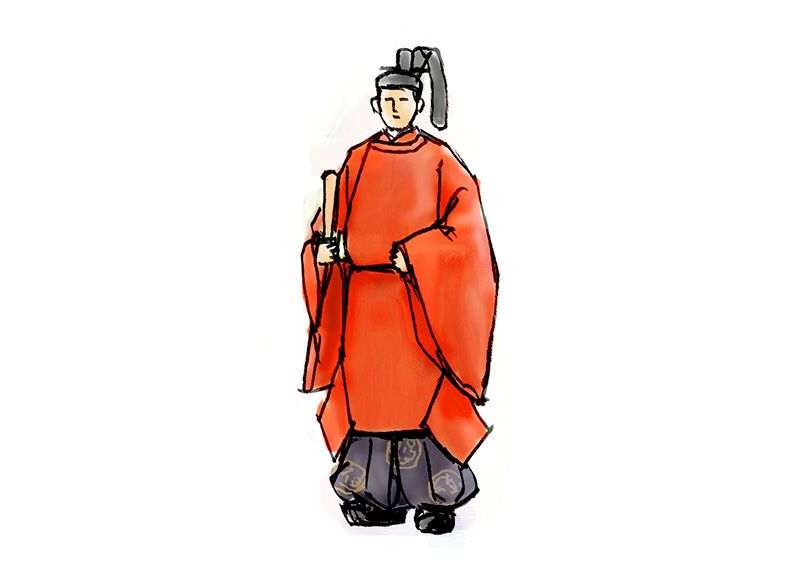 Formal vestments for priests of second rank (ikan) with kanmuri
Formal vestments for priests of second rank (ikan) with kanmuri
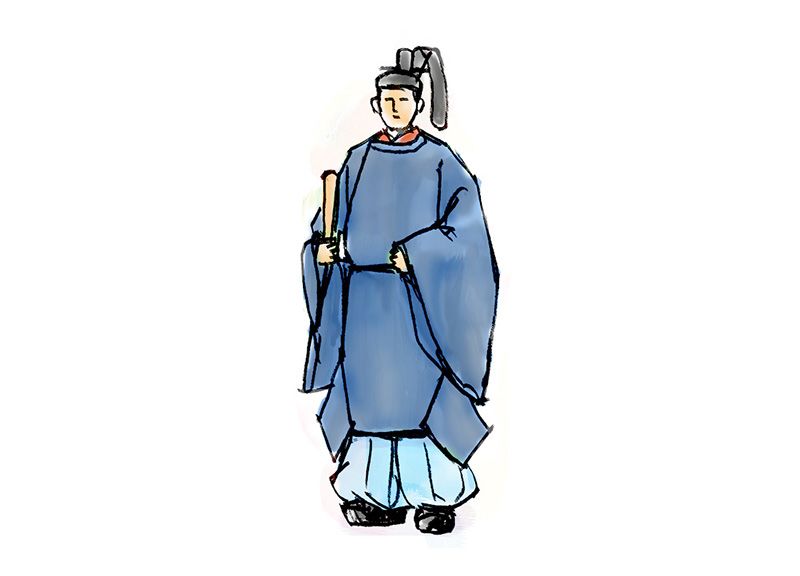 Formal vestments for priests of third and fourth rank (ikan) with kanmuri
Formal vestments for priests of third and fourth rank (ikan) with kanmuri
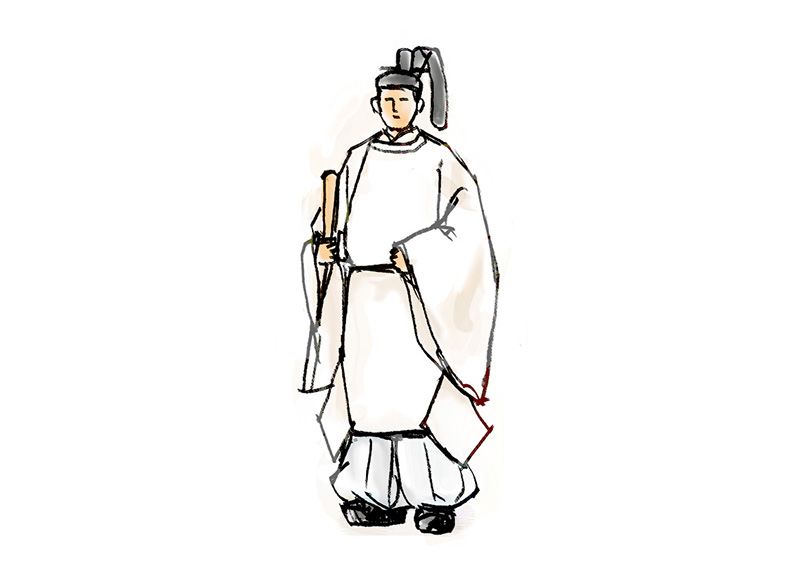 Saifuku (ritual vestments) with kanmuri
Saifuku (ritual vestments) with kanmuri
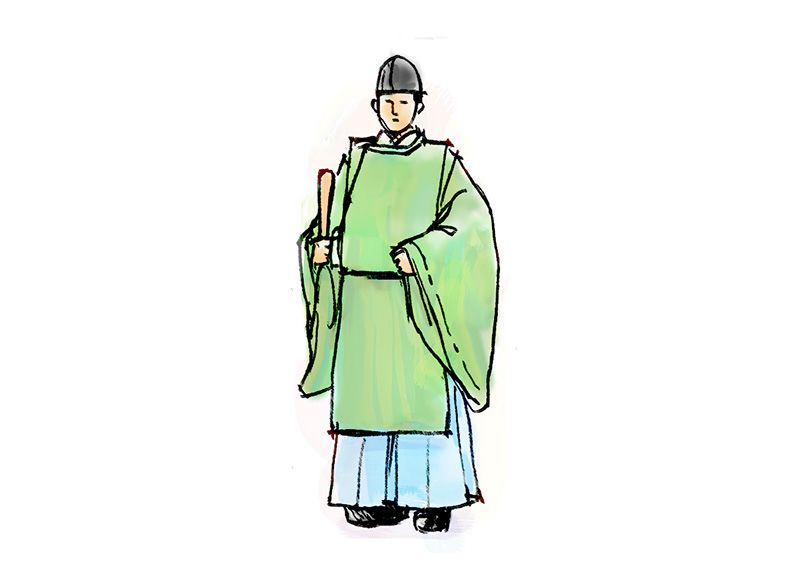 Kariginu for ordinary wear with kanmuri
Kariginu for ordinary wear with kanmuri
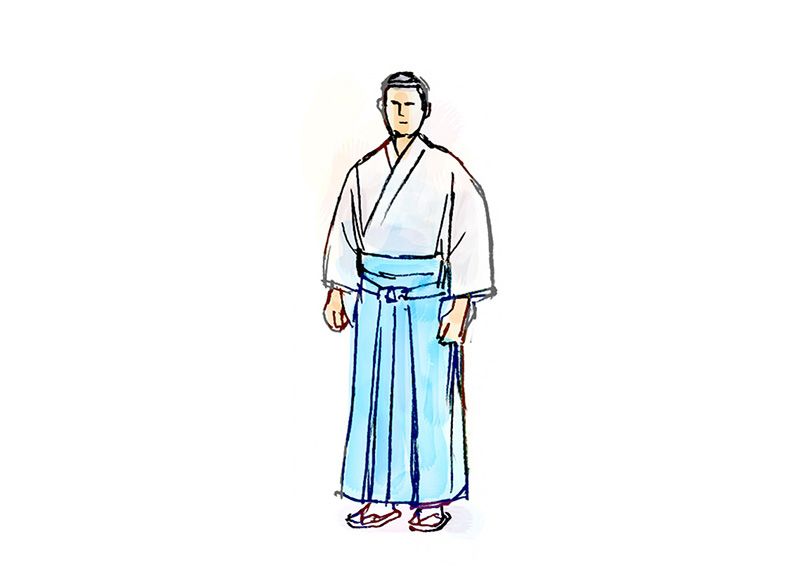 Everyday garb of a Shintō priest with eboshi
Everyday garb of a Shintō priest with eboshi
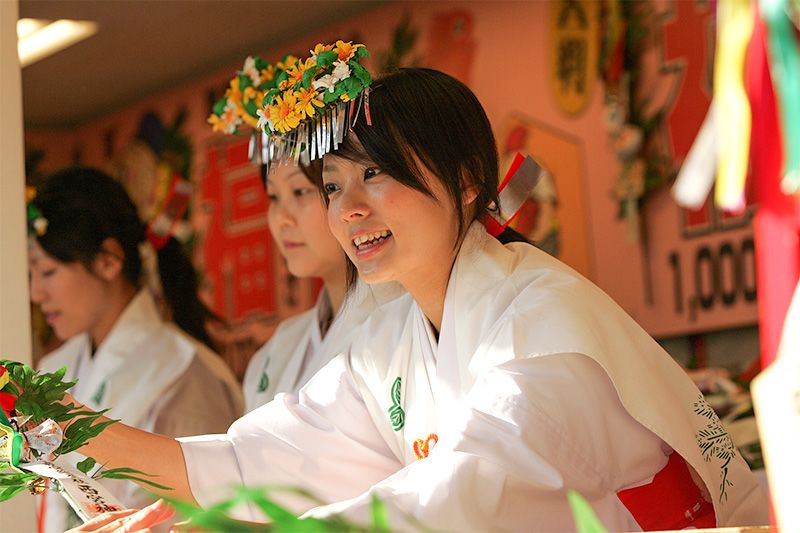 Miko at Nishinomiya Shrine, Hyōgo Prefecture
Miko at Nishinomiya Shrine, Hyōgo Prefecture
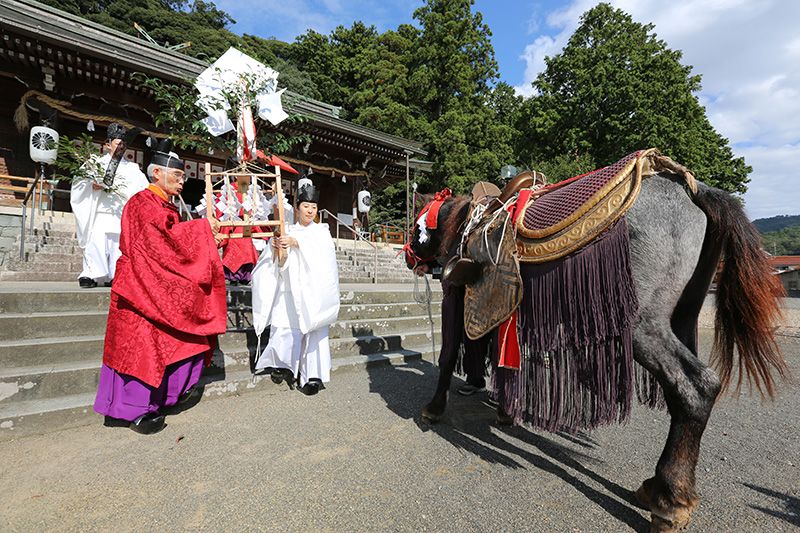 Priests at Mononobe Shrine, Ōda, Shimane Prefecture
Priests at Mononobe Shrine, Ōda, Shimane Prefecture
(Banner photo: Priests in traditional attire at Mononobe Shrine, Ōda, Shimane Prefecture.)
▼Further reading

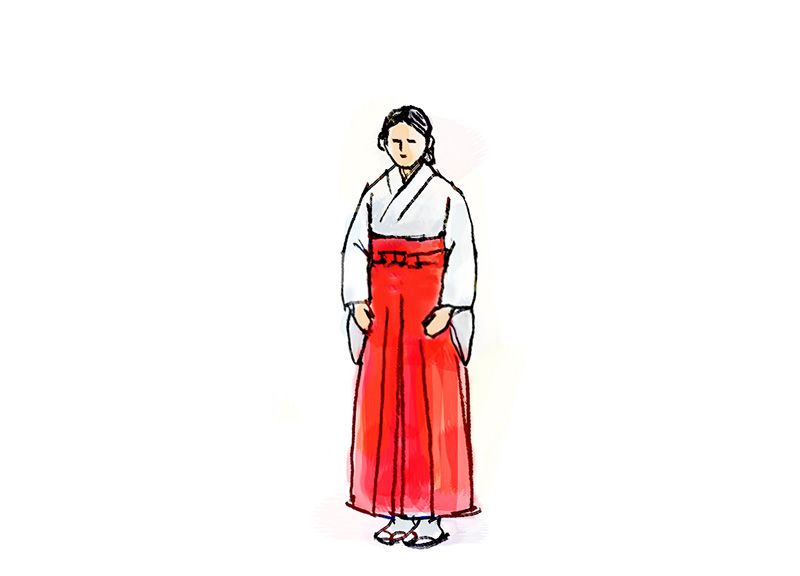
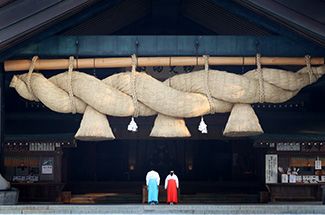 Your Virtual Guide to the Shintō Shrine
Your Virtual Guide to the Shintō Shrine 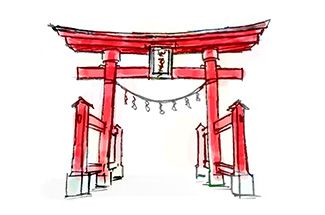 Torii: Gates to the Sacred Spaces
Torii: Gates to the Sacred Spaces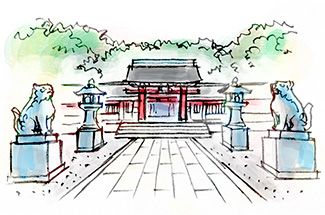 “Sandō”: The Worshipper’s Path
“Sandō”: The Worshipper’s Path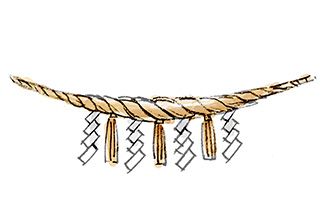 “Shimenawa”: The Sacred Rope
“Shimenawa”: The Sacred Rope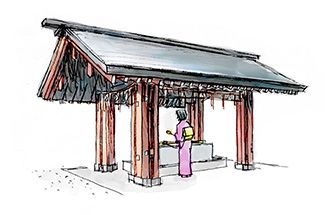 “Temizuya”: The Cleansing Ritual
“Temizuya”: The Cleansing Ritual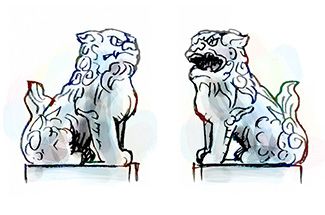 “Komainu”: The Shrine’s Guardian Figures
“Komainu”: The Shrine’s Guardian Figures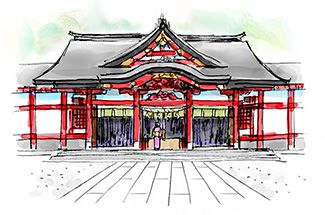 “Haiden”: The Hall of Worship
“Haiden”: The Hall of Worship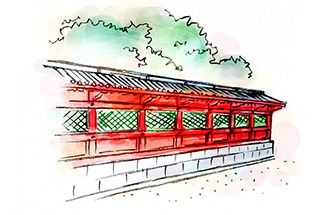 “Tamagaki”: Fence Around the Sacred Space
“Tamagaki”: Fence Around the Sacred Space “Honden”: The Main Sanctuary Structure
“Honden”: The Main Sanctuary Structure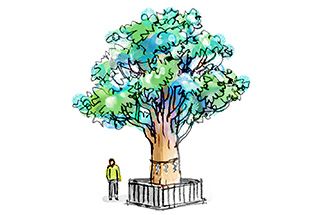 “Shintai, Shinboku”: The Divine Object or Tree
“Shintai, Shinboku”: The Divine Object or Tree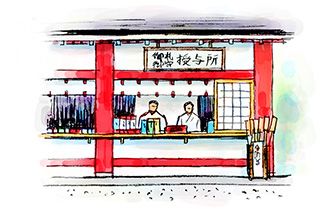 “Shamusho”: The Shrine Office
“Shamusho”: The Shrine Office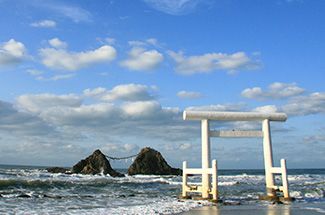 “Kami”: The Evolution of Japan’s Native Gods
“Kami”: The Evolution of Japan’s Native Gods